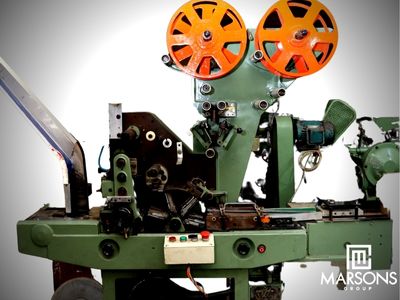In the intricate world of tobacco production, the process of cigarette manufacturing presents several pivotal challenges that demand attention and innovative solutions. From regulatory compliance to supply chain management and technological advancements, navigating the journey of transforming raw materials into finished products requires careful consideration and adaptation. In this article, we explore seven critical challenges in cigarette manufacturing that industry stakeholders must address to ensure operational efficiency, compliance, and sustainability.
Regulatory Compliance: One of the foremost challenges in cigarette manufacturing revolves around navigating the ever-changing regulatory landscape. Governments worldwide impose strict regulations on tobacco products, including labeling requirements, health warnings, and advertising restrictions. Adhering to these regulations necessitates ongoing vigilance and adaptation to ensure compliance and mitigate legal risks. Implementing robust quality control measures and staying abreast of regulatory updates are essential for manufacturers to uphold product integrity and meet legal obligations.
Supply Chain Management: Managing the intricate supply chain involved in cigarette manufacturing poses significant logistical challenges. Procuring high-quality tobacco leaves, filter materials, and packaging components while balancing cost-efficiency and reliability demands meticulous planning and coordination. Disruptions in the supply chain, whether due to natural disasters or geopolitical tensions, can have far-reaching consequences on production schedules and product availability. Implementing advanced supply chain management strategies, such as inventory optimization and contingency planning, is essential to mitigate risks and maintain seamless operations.
Quality Control: Ensuring consistent quality across millions of cigarettes produced daily is a paramount concern for manufacturers. Variations in tobacco leaf composition, moisture levels, and processing techniques can impact the taste, aroma, and overall smoking experience. Establishing stringent quality control measures throughout the manufacturing process is crucial to identify and address deviations from quality standards promptly. By prioritizing quality assurance, manufacturers can uphold brand reputation, minimize product recalls, and foster consumer trust.
Technological Advancements: Embracing technological innovations offers opportunities to enhance efficiency, reduce costs, and improve product consistency in cigarette manufacturing. Technologies such as robotics, artificial intelligence, and data analytics hold promise for streamlining production processes and increasing operational agility. However, integrating new technologies presents challenges, including capital investment and workforce training. Cigarette manufacturers must carefully evaluate the potential benefits and risks of adopting emerging technologies to remain competitive in a rapidly evolving industry landscape.
Sustainability Concerns: The environmental impact of cigarette manufacturing has garnered increased attention in recent years, prompting industry stakeholders to prioritize sustainability initiatives. From deforestation linked to tobacco cultivation to waste generation from packaging materials, addressing sustainability concerns requires a holistic approach. Collaborating with suppliers and regulatory bodies to implement sustainable practices, such as resource conservation and eco-friendly packaging solutions, is essential to minimize the environmental footprint of cigarette manufacturing.
Health and Safety Risks: Ensuring the health and safety of workers in cigarette manufacturing facilities is a fundamental responsibility for manufacturers. The production process involves handling tobacco, chemical additives, and machinery, posing inherent risks to worker well-being. Adhering to stringent occupational health and safety regulations, providing comprehensive training, and maintaining a culture of safety are essential for mitigating workplace hazards. Prioritizing employee welfare not only enhances productivity and morale but also fosters a positive organizational culture.
Market Competition: The global cigarette market is highly competitive, with manufacturers facing intense pressure to differentiate products and maintain market share. Shifting consumer preferences, regulatory changes, and emerging alternatives like electronic cigarettes present challenges and opportunities for traditional cigarette manufacturers. Innovation, brand-building, and market expansion are critical strategies for staying competitive in this dynamic landscape. By anticipating market trends and adapting to changing consumer preferences, manufacturers can position themselves for sustained growth and success.
In conclusion, cigarette manufacturing presents several key challenges spanning regulatory compliance, supply chain management, quality control, technological advancements, sustainability concerns, health and safety risks, and market competition. Addressing these challenges requires proactive measures, strategic investments, and collaboration across the industry. By embracing innovation and sustainability, manufacturers can navigate the complexities of cigarette manufacturing and thrive in a dynamic and evolving market landscape.






Самые трендовые новинки индустрии.
Абсолютно все новости лучших подуимов.
Модные дома, торговые марки, высокая мода.
Самое приятное место для модных хайпбистов.
https://malemoda.ru/
Точно актуальные новости модного мира.
Исчерпывающие эвенты известнейших подуимов.
Модные дома, торговые марки, высокая мода.
Интересное место для трендовых людей.
https://sneakersgo.ru/
Очень важные новинки индустрии.
Исчерпывающие новости лучших подуимов.
Модные дома, лейблы, гедонизм.
Интересное место для трендовых хайпбистов.
https://luxury.superpodium.com/
Fashion, luxury, lifestyle
Best style site for hypebeasts and cute people.
Fashion news, events. Last collections, collaborations, drops.
https://watch.lepodium.net/
Style, luxe, lifestyle
Best fashion site for hypebeasts and stylish people.
Industry news, events. New collections, collaborations, limited editions.
https://dubai.luxepodium.com/
Fashion, luxury, hedonism
Perfect style home for hypebeasts and cute people.
Industry news, events. Last collections, collaborations, limited editions.
https://london.luxepodium.com/
Самые актуальные события мира fashion.
Актуальные новости известнейших подуимов.
Модные дома, бренды, haute couture.
Интересное место для трендовых хайпбистов.
https://richlifestyle.ru/
Самые важные новости моды.
Исчерпывающие эвенты известнейших подуимов.
Модные дома, торговые марки, высокая мода.
Лучшее место для трендовых людей.
https://outstreet.ru/
Очень актуальные события модного мира.
Исчерпывающие события известнейших подуимов.
Модные дома, бренды, высокая мода.
Новое место для трендовых людей.
https://luxe-moda.ru/
LeCoupon: трендовые новинки для любителей вещевого шоппинга
Лента новостей, события, стильные образы, эвенты, дропы, подиум.
[url= https://qrmoda.ru/]https://qrmoda.ru/[/url]
LeCoupon: свежие новинки для любителей fashion шоппинга
Лента новостей, события, стильные образы, эвенты, коллекции, показы.
[url= https://qrmoda.ru/]https://qrmoda.ru/[/url]
Полностью важные новости моды.
Исчерпывающие эвенты известнейших подуимов.
Модные дома, торговые марки, высокая мода.
Интересное место для модных хайпбистов.
https://rfsneakers.ru
Очень важные события мира fashion.
Актуальные события лучших подуимов.
Модные дома, бренды, высокая мода.
Новое место для модных хайпбистов.
https://whitesneaker.ru/
Самые трендовые новинки индустрии.
Исчерпывающие мероприятия мировых подуимов.
Модные дома, лейблы, высокая мода.
Лучшее место для модных людей.
https://modavmode.ru
Самые актуальные события моды.
Актуальные события всемирных подуимов.
Модные дома, бренды, высокая мода.
Свежее место для стильныех людей.
https://miramoda.ru